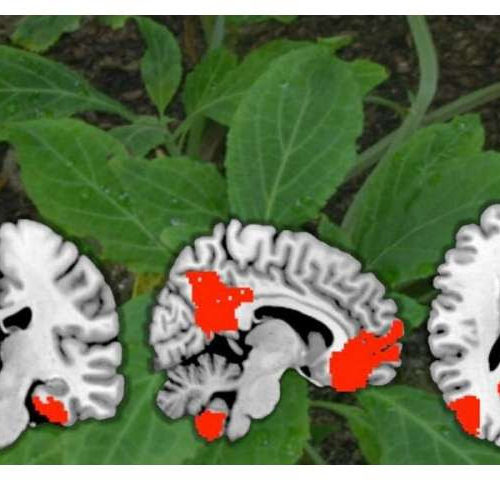by University of Queensland Credit: Dr. Juan Polanco et. al., The University of Queensland. University of Queensland researchers have discovered a new ‘seeding’ process in brain cells that could be a cause of dementia and Alzheimer’s disease. UQ’s Queensland Brain Institute dementia researcher Professor Jürgen Götz said the study revealed that tangled neurons, a hallmark sign of dementia,...
Tag: <span>brain</span>
COVID’S ATTACK ON THE BRAIN MAY EXPLAIN ODD SYMPTOMS
UNIVERSITYGEORGIA STATE UNIVERSITY Infecting the nasal passages of mice with the virus that causes COVID-19 led to a rapid, escalating attack on the brain that triggered severe illness, researchers report. The attack happened even after the lungs were successfully clearing themselves of the virus. The findings have implications for understanding the wide range in symptoms...
How does the immune system keep tabs on the brain?
by Washington University School of Medicine mmune cells (yellow and purple) fill a sinus (teal) in the outer layer of the meninges, the tissue that surrounds the brain and spinal cord. Researchers at Washington University School of Medicine in St. Louis have found that immune cells stationed in such sinuses monitor the brain and initiate an immune response...
Arterial Stiffening with Age Correlates with Structural Damage to the Brain
Today’s open access research paper is a reminder of one of the more direct mechanistic links between vascular aging and brain aging. Blood vessels stiffen with age, becoming progressively worse at the necessary task of contracting and relaxing in response to circumstances. This is in part due to cross-linking in the extracellular matrix, in which advanced glycation end-products (AGEs) such as glucosepane form persistent bonds...
Tapping the brain to boost stroke rehabilitation
by Jeannie Kever, University of Houston Testing showed most patients retained the benefits for at least two months after the therapy sessions ended, suggesting the potential for long-lasting gains. Credit: University of Houston Stroke survivors who had ceased to benefit from conventional rehabilitation gained clinically significant arm movement and control by using an external robotic device powered by...
How the brain paralyzes you while you sleep
UNIVERSITY OF TSUKUBA IMAGE: HOW THE BRAIN PARALYZES YOU WHILE YOU SLEEP CREDIT: UNIVERSITY OF TSUKUBA Tsukuba, Japan — We laugh when we see Homer Simpson falling asleep while driving, while in church, and while even operating the nuclear reactor. In reality though, narcolepsy, cataplexy, and rapid eye movement (REM) sleep behavior disorder are all...
A first look at how the drug salvinorin A works in the brain
by Vanessa McMains, Johns Hopkins University Three different fMRI scans of the brain from a recent Johns Hopkins Medicine study show that the psychedelic salvinorin A (derived from the Salvia divinorum plant seen in the background) affects the default mode network (seen in red) — the area of the brain most active when a person is...
The brain’s protein factories at work
CHARITÉ – UNIVERSITÄTSMEDIZIN BERLIN IMAGE: A SNAPSHOT OF PROTEIN SYNTHESIS IN ACTION INSIDE THE DEVELOPING BRAIN. CREDIT: IMAGE: M.L. KRAUSHAR/CHARITÉ Protein synthesis is a finely tuned process in the cell by macromolecules known as ribosomes. Which regulators are responsible for controlling protein synthesis in the brain, and how do they exert their control on the...
Research strongly suggests COVID-19 virus enters the brain
by Bobbi Nodell, University of Washington The S1 protein likely causes the brain to release inflammatory products causing a storm in the brain, researchers said. Credit: Alice Gray More and more evidence is coming out that people with COVID-19 are suffering from cognitive effects, such as brain fog and fatigue. And researchers are discovering why. The...
5 is blue, and A is red – short circuit in the brain or just Synesthesia?
Oh, please, gentlemen, a little bluer, if you please! This key requires it!” Franz Liszt Did you know that some people may see colors while thinking about numbers? Others may taste words, see sounds, or feel something on their skin when they hear a particular sound or smell a certain scent. It is a neurological...









